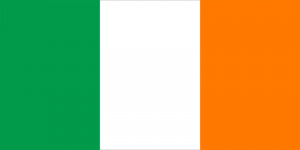Difference between revisions of "Language/Irish/Grammar/Possessive-Pronouns"
m (Quick edit) |
m (Quick edit) |
||
| Line 1: | Line 1: | ||
<span pgnav> | |||
{| class="wikitable pg_template_nav" | |||
|[[Language/Irish/Vocabulary/Relationships|◀️ Relationships — Previous Lesson]] | |||
|[[Language/Irish/Grammar/Object-Pronouns|Next Lesson — Object Pronouns ▶️]] | |||
|} | |||
</span> | |||
{{Irish-Page-Top}} | {{Irish-Page-Top}} | ||
| Line 137: | Line 144: | ||
{{Irish-Page-Bottom}} | {{Irish-Page-Bottom}} | ||
<span pgnav> | |||
{| class="wikitable pg_template_nav" | |||
|[[Language/Irish/Vocabulary/Relationships|◀️ Relationships — Previous Lesson]] | |||
|[[Language/Irish/Grammar/Object-Pronouns|Next Lesson — Object Pronouns ▶️]] | |||
|} | |||
</span> | |||
Revision as of 22:44, 2 April 2023
| ◀️ Relationships — Previous Lesson | Next Lesson — Object Pronouns ▶️ |
Possessive pronouns are an essential part of speaking and writing Irish. They are used to indicate the possession or ownership of a thing, person or idea. In this lesson, you will learn how to use possessive pronouns in Irish.
What are Possessive Pronouns?
Possessive pronouns are pronouns that show ownership or possession of an object or person in a sentence. In Irish, there are two main types of possessive pronouns: dependent and independent.
Dependent Possessive Pronouns
Dependent possessive pronouns are used when the object they refer to follows them directly in a sentence. They are similar to English possessive adjectives like "my," "your" and "their."
They are made by combining a subject with the possessive suffix that matches it, such as "-am" for "mo" (my), "-ur" for "do" (your), and "-a" for "a" (their).
Here are some examples:
| Irish | Pronunciation | English |
|---|---|---|
| Tá mo charr ina pháirc. | taw muh khar in-ah fawrk | My car is in the park. |
| Bhí do theach ag fulaingt an fhearg. | vee duh hoh-ukh eg full-eengt un arug | Your house was suffering from anger. |
| Rug an cat a eitleamh. Bhaineamar sult as ár ndroma. | rug un kat ayeht-leev. vun-e-vamer sult oss air n-drum-ah | The cat stole their food. We had fun on our trip. |
Independent Possessive Pronouns
Independent possessive pronouns are used when the object they refer to is implied but not explicitly stated in a sentence. They are similar to English possessive pronouns like "mine," "yours," and "theirs."
They are made by adding the relevant ending to the possessive article, which changes according to gender, number and case.
Here are some examples:
| Irish | Pronunciation | English |
|---|---|---|
| Is tiománaí mé agus is gearr mo stíl. | iss chum-on-ee may ah-gus iss gar muh steel | I am a driver, and my style is short. |
| Bíonn do chuid bia ar intinn agat i gcónaí. | bee-un duh khwid bee-ah err in-tchin og-it ih go-nee | You always have food on your mind. |
| Tá a croí ligthe liom. | taw a kree ligg-ha luhm | His/her heart is open to me. |
How to Use Possessive Pronouns in Irish
To use possessive pronouns in Irish properly, follow these guidelines:
Step 1: Identify the Object to be Possessed
The first step in using possessive pronouns is to identify the object that is being possessed. This can be a person, a thing, or an abstract concept. It is crucial to have clarity around the object to be possessed before using possessive pronouns.
Step 2: Identify the Possessor
The second step is to identify the possessor or owner of the object. This can also be a person, a thing, or an abstract concept.
Step 3: Choose the Correct Possessive Pronoun
After identifying the object and the possessor, you are ready to choose the correct possessive pronoun. If the object follows the pronoun, use a dependent pronoun. If the object is not explicitly stated, use an independent pronoun.
Here some examples in sentences:
| Irish | Pronunciation | English |
|---|---|---|
| Téann mo mháthair chuig an siopa. | tay-un muh waw-her khig un ship-ah | My mother goes to the shop. |
| Rug an cat a pheist. Bhí sé ar fheabhas. | rug un kat a pesht. vee shay err ay-vus | The cat caught its prey. It was excellent. |
| Tógann sé a chuid ama go léir le hobair. | toh-gan shay a khwid ah-mah guh layr luh hoh-ber | He spends all his time working. |
Possessive Pronouns Used in Different Cases
In addition to the nominative case, which is used for the subject of the sentence, Irish has other cases like the accusative, dative, and genitive cases. When using the possessive pronoun, you need to choose the correct case according to the noun it refers to.
Here are some examples:
| Irish | Pronunciation | English |
|---|---|---|
| Tugann mé aghaidh ar mo ghealach féin. | tug-un may ah-ee air muh yah-lahkh fayn | I turn my own face to my moon. |
| Níl aon chiall agam sa phaidreacha seo. | neel ay-un kheel og-um sah fah-drakha shuh | I have no sense in these prayers. |
| Níl fhios agam faoi do chairde. | neel iss og-um fwee duh khar-jeh (kh as in bach) | I do not know about your friends. |
Conclusion
We hope this lesson has helped you understand how to use possessive pronouns in Irish. Remember, the key to mastering any language is practice, so keep speaking and writing Irish as much as possible. In the next lesson, you will learn how to use object pronouns in Irish.
Videos
Irish Possessive Words Clearly Explained - YouTube
Other Lessons
- Answering Questions
- Imperative Mood
- Questions
- Object Pronouns
- Descriptive Adjectives
- Prepositional Pronouns
- Pronouns
- Irregular Verbs
- Future Tense
- Common Prepositions
Sources
| ◀️ Relationships — Previous Lesson | Next Lesson — Object Pronouns ▶️ |
